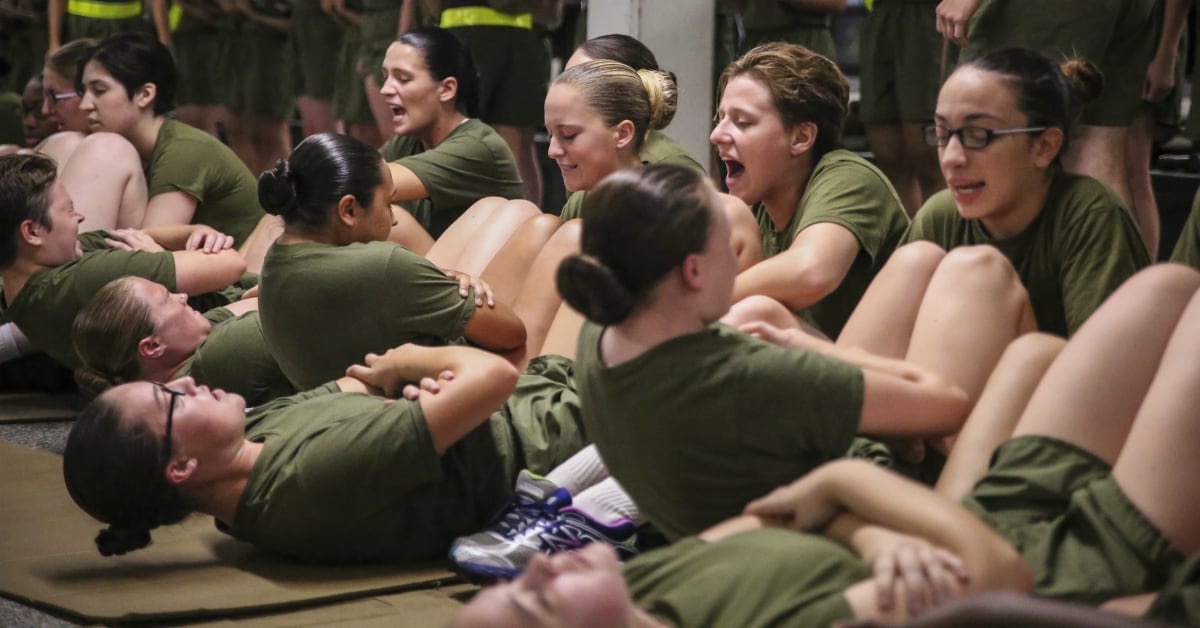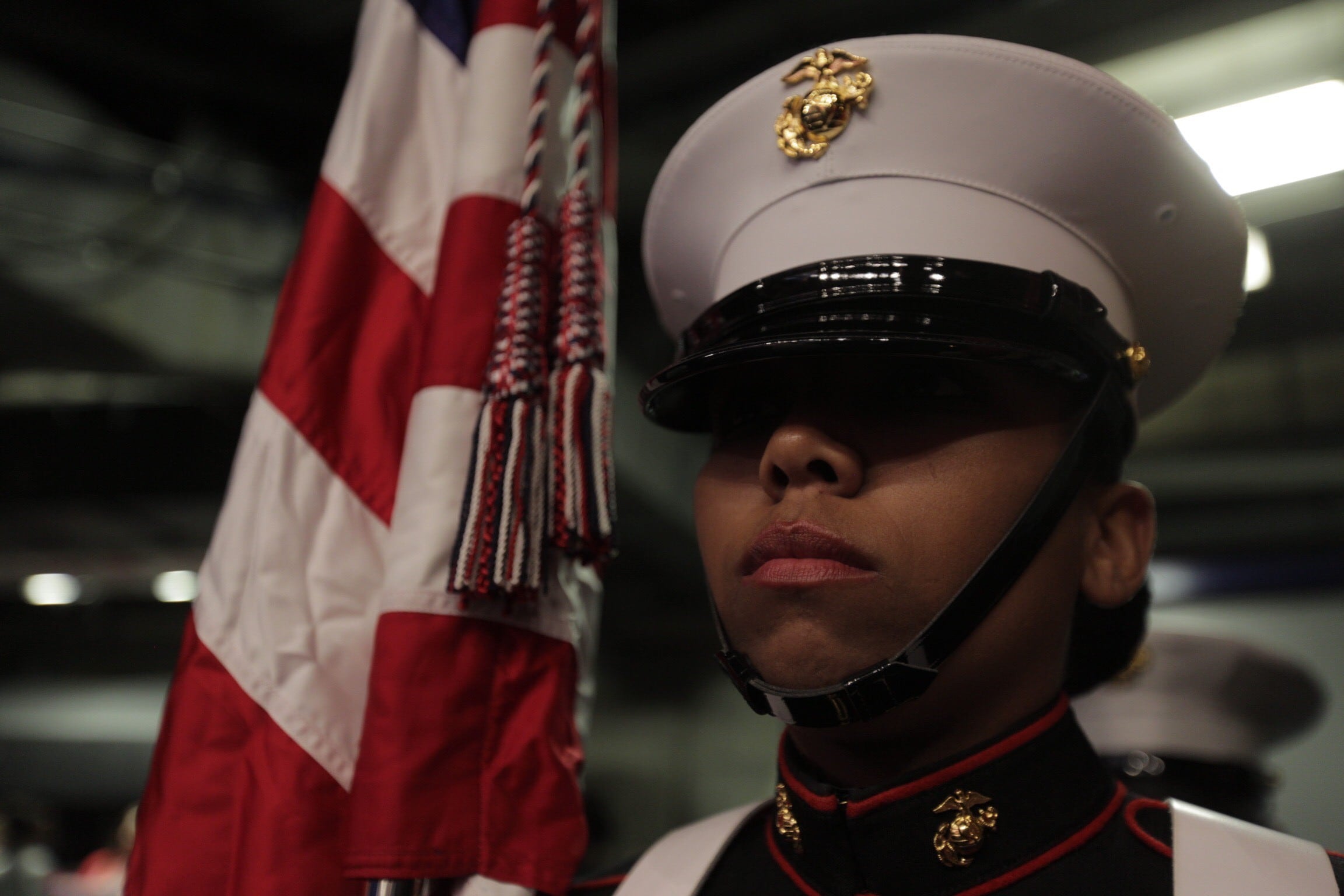After four years on active duty, Amy left the Army and moved back to her hometown.
However, she struggled to find her tribe. At work, she was told her handshake was a bit too firm and lectured about how her direct communication style made her coworkers uncomfortable. At her local VFW bar, the men stopped talking to stare at her, and her attempts to connect were met with awkward silences. A few other attempts to connect with the veteran communities she saw advertised at the VA and Facebook left her feeling similarly displaced.
“In both civilian settings and veteran settings, I was ‘weird,’” she recalls.
She explored some of the newer veteran service organizations (VSOs), but most failed to include child care or weren’t kid-friendly. Amy was a single parent, so she mentally crossed those options off her list too. She stayed lonely, and slowly sank into a deep depression.
The very word “veteran” calls to mind the image of a man — particularly a male combat veteran. However, there are more than 2 million women veterans in the United States today, and women veterans are the nation’s fastest-growing veteran population. Unfortunately, this unique population, many of whom have deployed during the past 18 years, rarely benefit from the traditional trappings of the hero returned home.
“Invisible Veterans,” an anthology released this summer by Praeger Publishing, outlines what happens — for better and worse — when women veterans like Amy return home and begin the long reintegration process. My co-editor and I assembled the latest research alongside powerful personal stories to paint a comprehensive picture of the return of these largely invisible veterans, and in doing so discovered that in many ways challenges and health risks for women veterans are significantly greater than those facing their male counterparts.
A lonely and dangerous civilian reality
Stories like Amy’s are common. Young veterans in general, and women specifically, often report they feel unwelcome in the very places created to support service members.
While on active duty, many women veterans work to hide their differences out of fear of visibility. They work to blend in with their male counterparts, and try to mask issues like traumatic stress, domestic violence and substance use. Many male veterans also experience these issues, but are more likely to seek help and to find resources on the other side.
As women move into the civilian world, existing challenges are compounded by the limited services and care systems, both non-profit and government, available to women. Women veterans also report that they leave the military with less of a very important factor: social support. Social support provides astonishing protective health benefits, to include lowered stress hormones, lowered risk of suicide and better overall physical health.
RELATED

Social alienation, on the other hand, is even more dangerous to your health than smoking.
It leads to increased levels of stress hormones, and when they’re elevated too long, you may begin to have difficulty communicating, displaying empathy or engaging in high-level thinking.
All of these things make connecting with others even more challenging, and your isolation can easily become self-perpetuating.
Particularly for women veterans, that the combination of invisibility and isolation combine to create deadly consequences post-service.
For instance, women veterans are 1.8 times more likely than civilian women to commit suicide. And women who do not use VA services have seen a 98 percent increase in suicide rates. To us, the numbers are more than just statistics. Behind them lie heart-wrenching story after heart-wrenching story. As editors of “Invisible Veterans,” and as Marines turned academic researchers, we know these stories well. In fact, both of us were almost part of these grim suicide statistics.
Once a Marine, always a Marine
My co-editor and I have a personal investment in the stories and health outcomes of women veterans, because these stories and data points are also our own. We are Marines.
Although no longer in uniform, we continue our service as academic researchers and accidental activists.
Kyleanne Hunter was a Cobra pilot and is a decorated combat veteran. I served as military police. We spent our 20s in the Corps, and it quickly became both our family and identity. We each deployed overseas and generally loved our time in service. However, transitioning to civilian life was another matter entirely. We were high performing, but — despite appearing “successful” and “normal” on the outside — we each felt a nagging sense of displacement and not belonging.
We missed the sense of unit cohesion and good-natured support we’d so often enjoyed on active duty, and struggled to find that same sense of community in our civilian lives. Further, we had a hard time carving out new identities. We were young, with intense personalities. We knew how to push the gas, but rarely the brake. We more masks of invulnerability and strength, but felt lonely and often isolated.
Even today, years after leaving the military, we find ourselves still searching for our place in a society that simultaneously praises veterans while unconsciously ignoring women.
What does it mean to go from being the most visible Marines to the most invisible veterans?
How does a woman make that transition successfully? These are the questions we sought to answer through “Invisible Veterans.”
Reaching women veterans
The research and stories we compiled illustrate the fact that women veterans share many of the exact same concerns of our male colleagues. However, transition is made more difficult by the lack of services and social support we find as we depart the service.
The good news is that resilience can be taught, and our work illuminated many success stories. We learned of women leveraging a unique formula of social support, spirituality and self-care to overcome their sense of isolation, and to form new identities post-service. These women often go on to become leaders in business, government and local communities, and to thrive through challenging times.
We also discovered that those hoping to reach women veterans must acknowledge that many women veterans do not feel like current efforts are effective. For example, unavailability of childcare is often an insurmountable barrier to participation in a program or service, particularly since women are more likely to be the primary caregivers to dependent children.
RELATED

Women veterans who have experienced trauma may be less likely to participate in a mixed-sex setting. Instead, an offering that includes a single-sex environment is more likely to see participation.
Making services and programming as effective for female veterans as it is for male veterans is a leadership challenge. However, the effort can succeed if prioritized. Government agencies, non-profits, communities of faith, academic institutions and companies all have a role to play.
So, too, do male veterans. Whether part of a traditional or newer VSO, or simply a member of the broader veteran community, be on the lookout for female veterans. Make an effort to welcome them into your professional networks, clubs and communities. Help these invisible veterans feel seen once more.
Kate Hendricks Thomas and Kyleanne Hunter are the editors of a new volume on the experiences of service women titled “Invisible Veterans: What Happens When Military Women Become Civilians Again,” available wherever books are sold.





